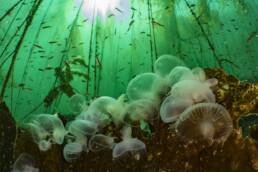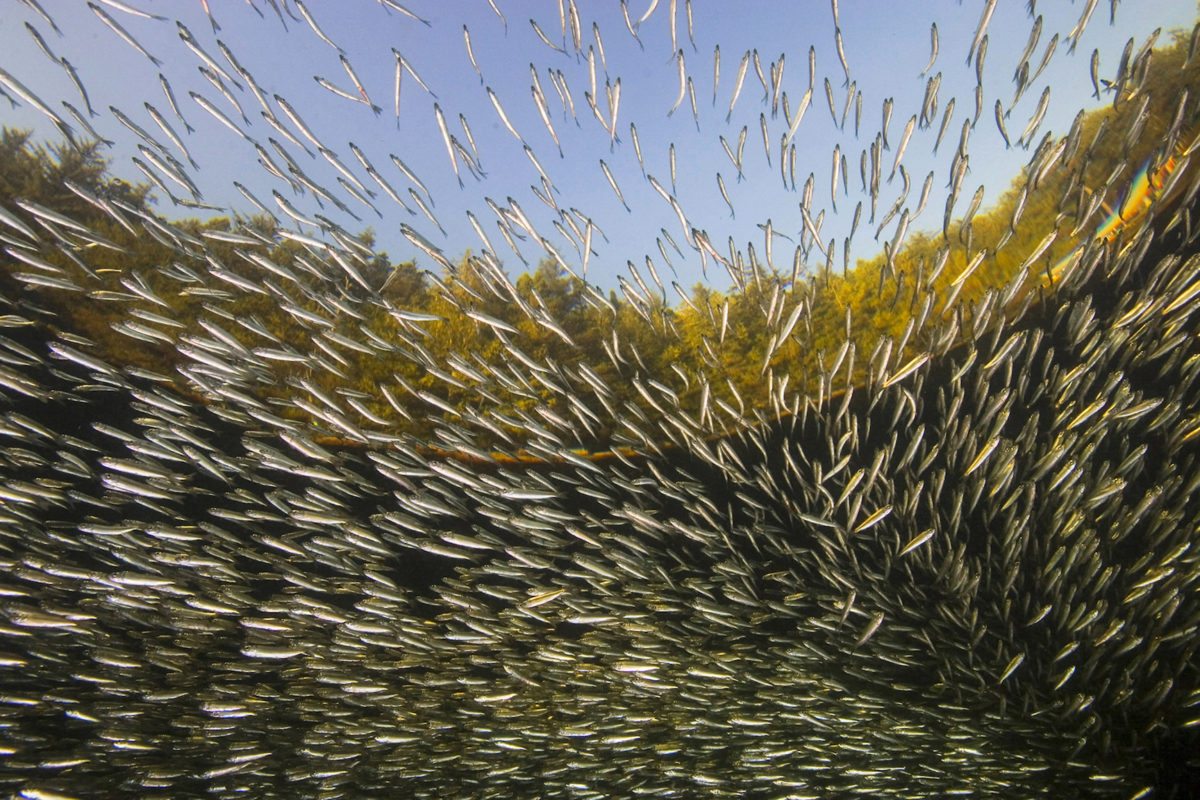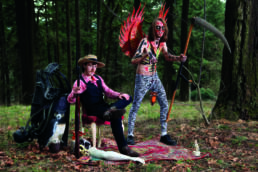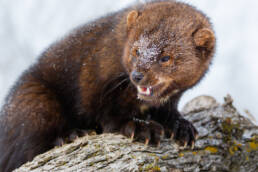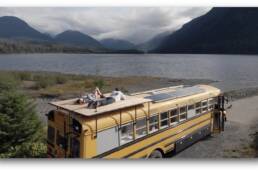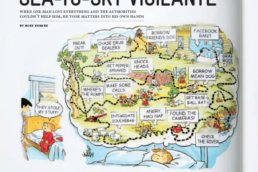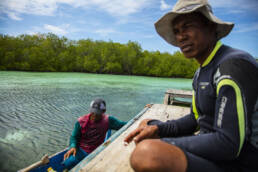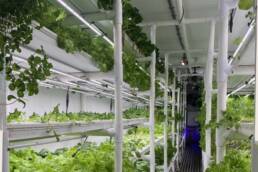Two National Geographic photographers and marine biologists are trying to get the Salish Sea, which includes the Strait of Georgia, Puget Sound and the Strait of Juan de Fuca, classified as a UNESCO World Heritage Site. We speak with one of the champions of the cause.
Paul Nicklen is a National Geographic photographer and marine biologist who was raised in the Canadian Arctic and now lives in Nanoose Bay on Vancouver Island. Together with his partner Cristina Mittermeier — also a Nat Geo shooter and a marine biologist — they founded SeaLegacy, a non-profit dedicated to protecting 20% of the ocean before 2020. It’s an ambitious goal, but the couple have started with a campaign to get the Salish Sea designated as a UNESCO World Heritage Site, similar to the Great Barrier Reef in Australia or Gros Morne National Park in Newfoundland. Where is the Salish Sea? It’s closer than you think. We had a conversation with Nicklen to find out more.

Where exactly is the Salish Sea?
Simply put, it’s the Strait of Georgia, Puget Sound and the Strait of Juan de Fuca put together. More specifically, it stretches from the southern end of Johnstone Strait—near Campbell River—along the eastern shore of Vancouver Island, past Victoria, Vancouver and into Puget Sound to Seattle and Tacoma. It includes the Gulf Islands of Canada, and the San Juan group of islands in the United States. Finally, it includes the Strait of Juan de Fuca that leads out to the Pacific Ocean.
Where did the name “Salish” come from?
Salish refers to the Coast Salish First Nations people, and their wide-ranging dialect. While Coast Salish tribes exist independently all up and down the west coast, from Oregon to Northern B.C., and inland to Montana’s Flathead Valley, it’s the latter location where the word Salish originates from. A marine biologist from Bellingham first coined the term Salish Sea in 1988, and the Geographical Names Board of Canada made it official in 2009. The United States Board on Geographic Names followed suit a month later.
What does it mean to be a UNESCO World Heritage Site? How does an area become one?
UNESCO is the UN Educational Scientific and Cultural Organization, so the sites are essentially special places with outstanding universal value. There are 10 criteria for selection; six relating to culture, and four for natural value. Most countries in the world—192 in total—have signed on to the World Heritage Convention, so it’s a legitimate process and designation that is respected worldwide. There are over 1,000 sites.
The Canadian Prime Minister, Justin Trudeau, and the environment minister invited Canadians to pitch ideas for new sites, to celebrate the 150th anniversary of Canada.
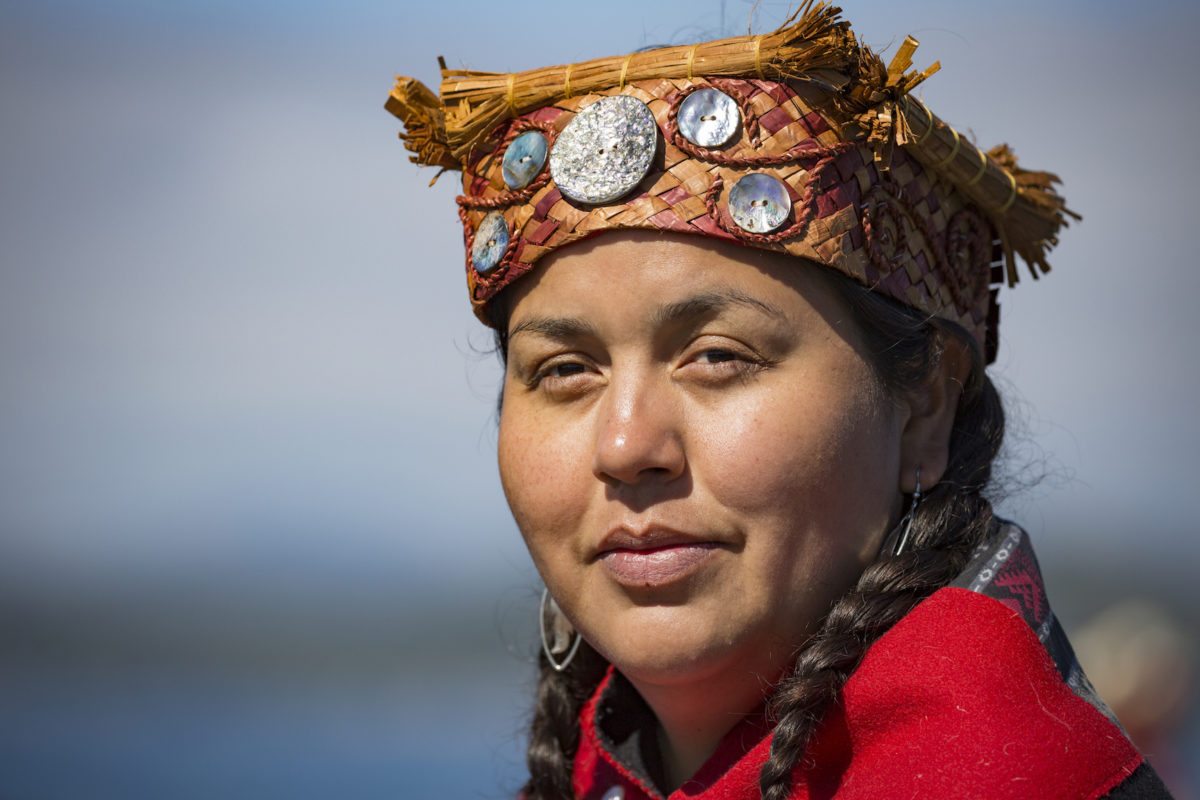
Are there other ocean-based world heritage sites?
Oh, yeah. Tons. The Great Barrier Reef. Glacier Bay in Alaska. Australia’s Shark Bay. Venice. The Sundarbans in Bangladesh. Florida’s Everglades. Ha Long Bay in Vietnam. It’s a long list.
Why is the Salish Sea unique? Why is it worth designating it a world heritage site?
One is biodiversity. Under the surface of the water, the Salish Sea is akin to the Great Bear Rainforest or the Amazon. There are over 3000 species in the water, many of which are endemic, meaning they exist here and only here. This is the home of the same orcas that B.C. and Canada celebrate constantly, including the southern resident killer whales pod; the only endangered orca population. Steller Sea lions are everywhere. The Giant Pacific Octopus—the world’s largest octopus—lives here. It’s massive. And that’s just in the water. The intertidal zone of the Salish Sea is often so crowded with lush life that it’s hard to walk. Above the tideline, bears, giant trees, moss so deep it’s like a bed of emerald marshmallows. Anyone who has visited knows. Those who haven’t should have the opportunity to see it unspoilt.
Another reason is the culture. The Coast Salish people have been here 10,000 years…probably more. From Comox to Squamish to Esquimalt and then down to the Puyallup people in Puget Sound, they have been here ten millennia. James Cook didn’t make it until 1778. This place is so rich in culture and the whole world comes to experience it on vacation. Add in another eight million people who call it home now and cherish like only outdoorsy Pacific Northwest people can, and you have a damn special spot worthy of protection.
How will this impact the area?
A UNESCO designation will bring a huge influx of attention and cash to B.C. and Washington State. Tourism in B.C. alone already pulls in $10-15 billion a year. We need to protect these waterways so we can continue to, and increase, this sort of cash injection that doesn’t destroy our ecosystems. It doesn’t mean we will stop all tanker traffic. It means we will regulate it so it’s not the wild west. It means there’ll be due process before industry has a free-for-all. Being a World Heritage Site only brings good things for the majority of the population. And it allows us to share and profit from this “Super Natural British Columbia” rather than chipping away its value with reckless abandon. I challenge anyone to take a look at the list of existing UNESCO sites and tell me they don’t think the Salish Sea should be included.
When did this campaign begin?
It kicked off a few weeks back in January with the application process. In April they government will decide what site to throw their weight behind. In the meantime, we are urging people to help us by visiting https://www.wearethesalishsea.eco to sign or write a letter of support.
Should this designation go through, what will change for the Salish Sea? What will it look like in 5 years?
Realistically, not much for two reasons. One, the process takes a long time. It could be 10 years before an actual designation is made. Frustrating, but that’s the way these things move…like glaciers. Two, even when it does go through, we want the Salish Sea to remain like it is. We live in a relatively pristine place on the shores of the Salish Sea. If it still looks the same in five years, I’ll be ecstatic. Then again, it might be crawling with tankers shipping bitumen. We can always do better than we are right now, and that’s all we’re trying to do—make the Salish Sea better for all the people, plants and animals that call it home, and for the people who want to come visit.
Related Stories
Who’s The Best Band in the Pacific Northwest Heavy-Metal Scene?
Born from record bins, basements and Cascadia’s blue-collared past, the Pacific Northwest heavy-metal scene has torn a…
What’s More Badass Than a Honey Badger? These Guys. And They’re Returning to the Pacific Northwest.
A ferocious carnivore and old-growth forager, the fisher has been over-trapped and its habitat nearly wiped out. But in…
Is This The Coolest School Bus In The Pacific Northwest?
Louisa Gilbert of Wild Bus Films has turned a simple yellow school bus into an off-grid travelling palace. This is…
Sea-to-Sky Vigilante
This story first appeared in Coast Mountain Culture's Home Issue, Summer 2013. When Squamish-based photographer Dave…
Cigarettes in the Sea
Far away, hidden in the vast scatter of islands known as the Indonesian archipelago, Papa Adam sets out from the…
Canned Veggies: Check Out Fernie’s New Sea-Can Garden
A unique growing system from the Yukon and adopted in the East Kootenay should produce some serious green. By Dave…


